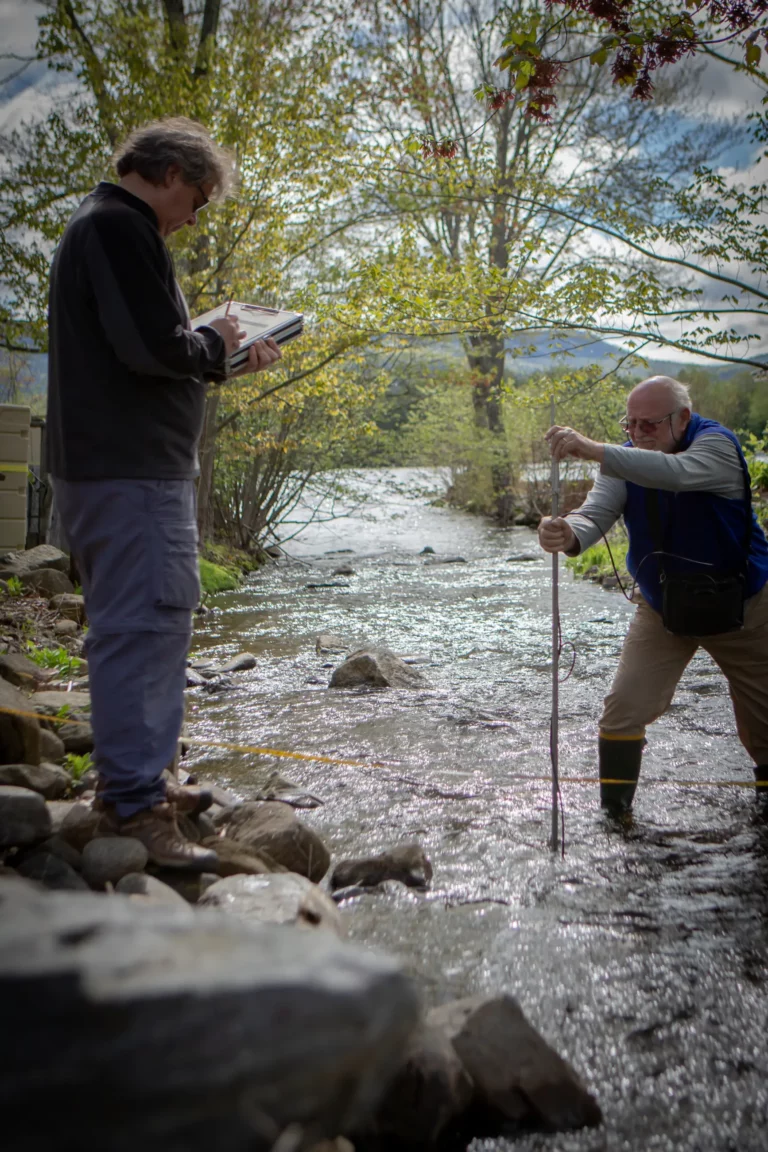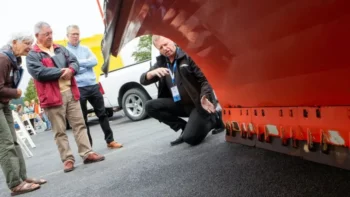Beauty Without Comparison: Protecting Lake George’s Pristine Waters
By: Thomas Hynes

Lake George is rightly referred to as the Queen of American Lakes. Another honorific comes by way of Thomas Jefferson, who in 1791 as Secretary of State, visited Lake George. He had been suffering from migraines, but found the lake to be a perfect remedy. In a letter to his daughter, he wrote, “Lake George is without comparison, the most beautiful water I ever saw.” Since that time, the lake has been visited by many millions of people who are drawn to its beauty and charm.
Like so many beloved areas of natural beauty throughout the world, Lake George runs the risk of being loved to death. All those tourists and property owners come with development and infrastructure that invariably puts a lot of pressure on the basin.
As Lake George Waterkeeper, Chris Navitsky has been protecting the lake from these and other threats for the last 20 years. During that time, Chris has been fighting the good fight, development project by development project. He has attended and left public comments at thousands of public meetings. Some joke that he even has lake water running in his blood.
Chris has not only enjoyed many hard fought victories for the lake, but he’s also done his part to share his methods and findings with a wide audience. Put another way, he’s making Lake George a destination for solutions.
Those solutions all start with science. As just one example, by sampling and monitoring the streams and lake of the basin, Chris uncovered major nutrient pollution coming from a decrepit, Depression-era wastewater plant in Lake George Village. Catalyzed by a report written from the Lake George Waterkeeper, the community ultimately constructed a new $24 million wastewater plant, which opened earlier this year.
Chris and others produced a report on how nitrates were flowing into the lake from a wastewater treatment plant in the town of Bolton, NY. Not surprisingly, there was also a suggested fix. In this case, they recommended a wood chip bioreactor. This low cost, high return approach to reducing nitrates has been used in agriculture, but never before with a municipality. The pilot program has worked so well that two other bioreactor cells are planned.
Chris has even done a groundbreaking study of septic systems in the basin, totaling about 6,000 basin-wide. He estimates that about 4,000 of them – roughly two thirds – are either failing or at risk of failing. Suffice to say that would have a major impact on nutrient pollution and the lake’s overall health. But instead of waiting for someone else to solve the problem, Chris sprung into action. He even recruited local banks to offer low or no interest financing to replace the thousands of aging septic systems. There’s even money coming from the state of New York.
Chris is also contributing to an economic assessment model for Lake George, based on the Great Lakes model, to use as grist for stronger water quality protections. He has also introduced Low Impact Development Certification, or LID Certification, for more thoughtful land development inspired by the LEED Certification program for buildings.
One of the biggest achievements from Chris and Lake George Waterkeeper has to do with road salt. Lake George is situated in upstate New York, not far from bordering Vermont and Canada. So suffice to say, it snows in the area. For decades, snow plow trucks have used road salt to help make icy roads safer. As is now being realized around across the country and beyond, too much road salt is very destructive to a watershed’s wellbeing. It can corrode pipes, undermine water quality, and contaminate groundwater. Something had to be done.
 So the Lake George Waterkeeper, along with parent organization Lake George Association, got to work on a solution. Previously, Lake George had been using an estimated 30,000 metric tons of road salt, enough to fill a train car three miles long, every single year. And they weren’t tracking, which made the snowplowing dramatically inefficient.
So the Lake George Waterkeeper, along with parent organization Lake George Association, got to work on a solution. Previously, Lake George had been using an estimated 30,000 metric tons of road salt, enough to fill a train car three miles long, every single year. And they weren’t tracking, which made the snowplowing dramatically inefficient.
The key was to use salt smarter. Oftentimes, that means using salt first, as in before it snows. Technically, they would salt and water and apply this briny substance to roads before a storm. This adjustment makes it harder for an ice bond to form on the asphalt, which makes plowing easier. However, Chris also championed the introduction of segmented, live-edge plows that follow the contours of the road. The entire operation is backed by GPS tracking of every stretch of public road in the basin, which allows plow drivers to know road-by-road and lane-by-lane exactly how much salt they are applying.
Today, the Lake George basin is moving toward a low salt diet, in certain locations using half the amount of road salt that it previously had. The plow drivers and highway supervisors, who previously shook their heads in disbelief at this proposal’s prospects, are now among the program’s most ardent spokespeople. As a result of this success, Chris was appointed by New York State Governor Hochul to the Adirondack Road Salt Reduction Task Force.
Looking ahead, the group’s partnership with IBM and Rensselaer Polytechnic Institute, the Jefferson Project, has made Lake George the world’s smartest lake, for the purpose of informing its sustained protection, a serious big data endeavor studying the lake from physics to fish.
In a way, Lake George Waterkeeper is helping attract a whole new kind of tourist to Lake George. Though, these people are not necessarily visiting to appreciate the lake’s ‘most beautiful waters,’ but rather to learn from Chris how to take partner-focused, science-based, proactive approaches to the chronic problems facing watersheds all over the world.